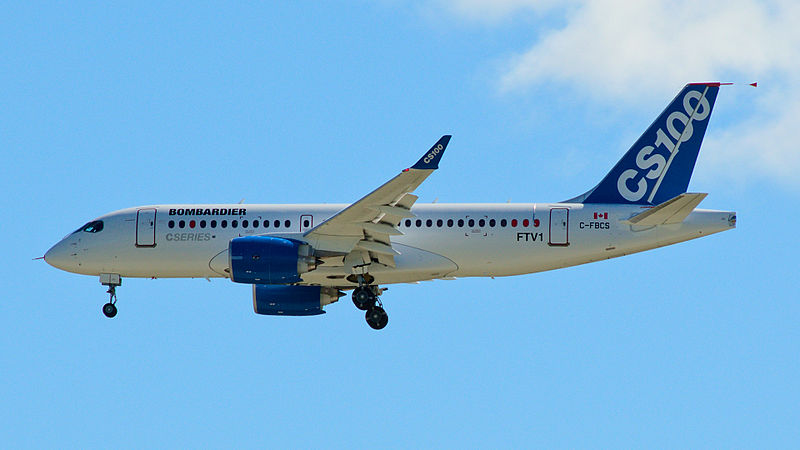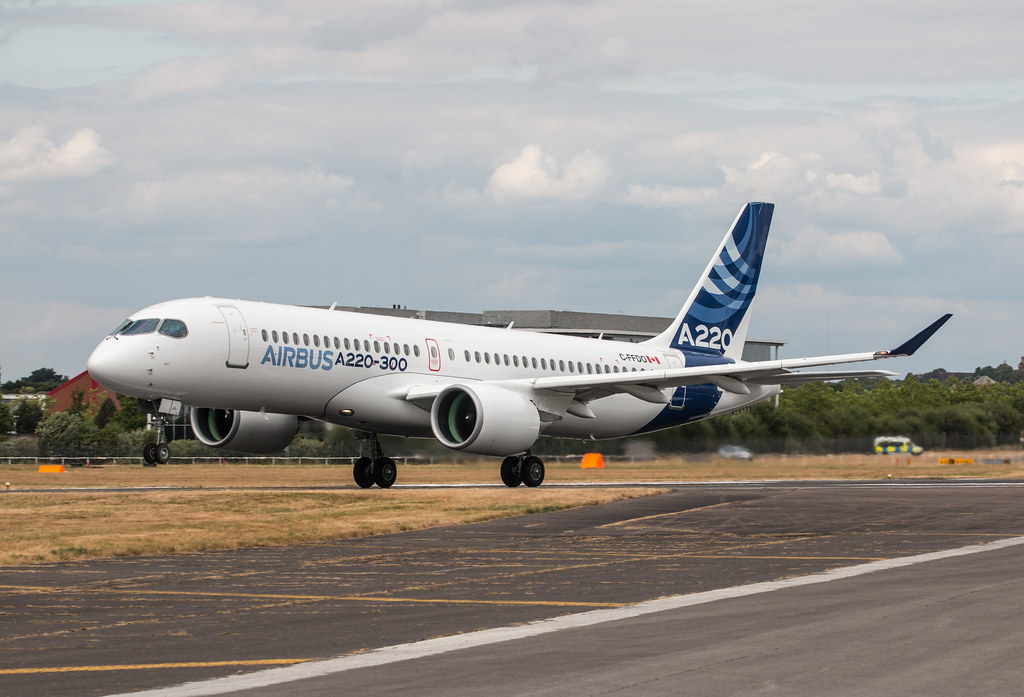| Page 1 | History | ||
| Page 2 | Aircraft Spec | Operators | More Aircraft Spec |
| Page 3 | Benefits for Operators | Benefits for Passengers |
After seeing success in their Canadian Regional Jet (CRJ),Quite Series (Q-Series), and Learjet programs, an airplane manufacturing company from Canada, Bombardier, decided to come up with a new clean sheet design for a short to medium haul aircraft. This aircraft would be known as the C-Series or Canadian Series (CS).The first aircraft was the CS100 and later a bigger version, the CS300, would join the family. The CS family would directly compete with Boeing's 737 MAX 7 and Airbus's A320 Family. To make their aircraft stand out and interest customers, Bombardier would use new technology on the aircrafts. This would make the C-Series more efficient, which would save more fuel than any other aircraft of its type. After a troubled start, they were able to secure orders from Swiss Airlines, the first airline that will fly the CS plane.Later, in 2017, Canadian Airlines and Delta Airlines would purchase orders.
Boeing, another airplane manufacturer, based in the U.S.A, filed a petition for dumping against Bombardier. Boeing argued that Bombardier was selling aircrafts to Delta Airlines at a price much lower than the cost to manufacture aircraft, claiming it would threaten their 737 MAX 7 program. In addition, they ordered an embargo to be placed on all CS aircraft sold in the U.S since the CS was mostly manufactured outside of the U.S. Later in January 2018, the U.S International Trade Commision declared that there was no threat,and revoked the dumping petition. However, this ruling was too late for Bombardier. The dumping had threatened the program to the point where they would have to end it.

Photo by Alexandre Gouger Creative Commons
Seeing the potential in the CS program, Airbus, a well known airplane manufacturer based in Europe, stepped in and offered to take 51% of the program.This was great news for Bombardier since their project would be saved, and Airbus had manufacturing sites in the United States that would help build the CS100 and CS300 while negating the embargo placed on thier product from earlier. In addition, Airbus promised to help the CS program to break even. Bombardier agreed to the deal in the hopes of saving their project. In July the CS100 and CS300 were renamed to the Airbus A220-100 (Also known as the A221) and Airbus A220-300 (Also known as the A223) respectively. The names were changed to better fit with the naming pattern Airbus created for all of its commercial aircrafts.
After Airbus took over and promoted the A220, it resulted in orders to soar. Many airlines from around the world showed interest in the aircraft totalling to over 500 orders. Airbus took the plans of the A220-100 and tweaked it to create a new jet for the family. This jet was designed to be a private jet and it would be known as the A220-100 ACJ, or the ACJ Two Twenty. In addition, plans to build a longer version of the A220, the A220-500, is on the way as well. Airbus hopes to have all 4 aircrafts of the A220 family flying all over thworld in the near future.

Image by Steve Lynes Creative Commons, Image was resized
Article based on: Simple Flying